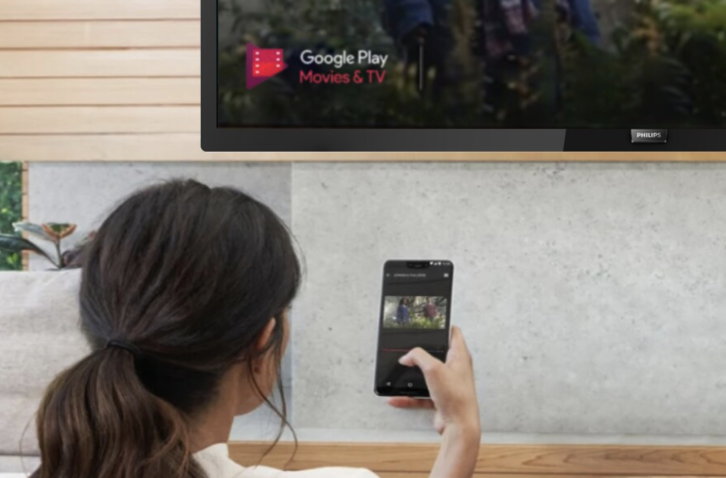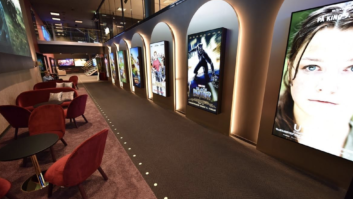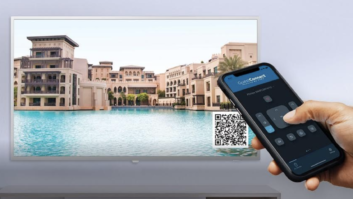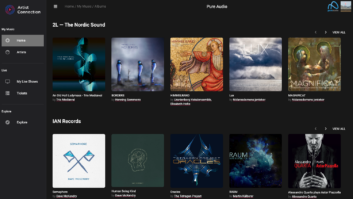
With streaming now firmly established as the medium of choice for many consumers’ entertainment needs, the world of business is rapidly waking up to the benefits of high quality streaming. Here, Philips PDS delves into the growing demand for such services from commercial environments…
With the news that over 10 million subscribers had already signed up to use Disney+ at launch on 24 March 2020, it’s never been more apparent that streaming has become mainstream. And with consumers demanding where and when they want their content, the ability to share onto Professional TVs – such as the Philips MediaSuite for hospitality settings and the Philips B-Line for commercial environments – has never been more important.
In 2020 in the SVoD (Subscription Video on Demand) market, there are reported to be over 1.129 billion streaming service users, with this figure expected to rise to over 1.306 billion by 2024. That’s around 15.2 per cent and 16.9 per cent respectively of the global population using a streaming service. And while streaming is generally a consumer service, demand for access to streaming services in some commercial settings is also growing, especially in hospitality.
Why streaming? Why now?
Streaming has been around since 2005, when YouTube was launched, and 2006 when Netflix and the predecessor of Amazon Prime Video both entered the marketplace. Even with the arrival of these early providers, it wasn’t until the advent of smart TVs, enabling access at the touch of a button (or two) that streaming became a household regular. As these technologies have become more familiar, further advanced and increasingly competitive, more people are choosing to ‘cut the cord’ and look toward the convenience, cost savings and customised approach that OTT content has to offer.
You may also be interested in:
- Philips PDS offering online resources during lockdown
- Life under lockdown: The best AV tools and resources on the web
Who is streaming?
Millennials are leading the way when it comes to going mainstream with streaming, with Generation X just behind them. According to Deloitte, 72 per cent of Trailing Millennials, 69 per cent of Leading Millennials and 60 per cent of Gen Xs are streaming service subscribers.
“Statistics also show that Millennials will make up three quarters of the global workforce by 2025” said Jeroen Verhaeghe, product manager for Philips Professional TVs. “The percentage of us streaming will be huge and businesses need to be prepared to cater for these individuals.
“This was apparent as we were considering the benefits we could bring with MediaSuite. Its Chromecast built-in feature already made it easy for users to access their streaming services, such as Amazon Prime Video and Disney+ and now, with Netflix-embedded, our streaming functionality has changed the game in the Professional TV marketplace again.”
Where is streaming?
With the changes in our behaviour toward an always-on world, and a more sociable way of living, the way we consume TV has also changed. Streaming services are catering for these new demands, transforming the very definition of television viewing. Now we prefer to choose what, when and even where to watch it.
While viewing on a range of BYODs, from mobile phones to tablets and laptops is now easy, TVs are still the go-to streaming device for viewing OTT video. In Conviva’s State of Streaming research of viewing behaviour across 250 OTT apps worldwide in Q2 2019, it was found that 56 per cent of the time spent viewing this content happened on connected TVs, while less than 25% of the streaming happened on mobile.
How is streaming used in commercial settings?
In the commercial setting, as well as enabling users – whether customers in a restaurant or bar, or office workers in the meeting room – to access their video streaming services, the ability to access other content on their personal devices, such as their own presentations and content, and to share that on the TV or large format display is equally important.
With more and more businesses also creating video, including live streaming content, to engage with their audiences, the facility to allow visitors to stream that content from their BYODs onto displays for meetings and presentations, is becoming a necessity.
Giving easy access to streaming on hospitality TVs
Whether Netflix, Amazon Prime Video or the newly released Disney+ to name just a few, anyone with a smartphone and a subscription to a streaming service has access to what seems like endless hours of free and paid content.
Casting these onto a professional television in a home from home setting isn’t always as easy as it sounds, though. The Philips MediaSuite Hospitality TV changed this in 2019. The world’s first professional TV to include Chromecast built-in, it negates the need for additional hardware and allows users to seamlessly share their own content securely, at just the touch of a button. In 2020, MediaSuite will also be adding Netflix-embedded to its repertoire.
You can download the full Streaming whitepaper from Philips Professional Display Solutions here.







